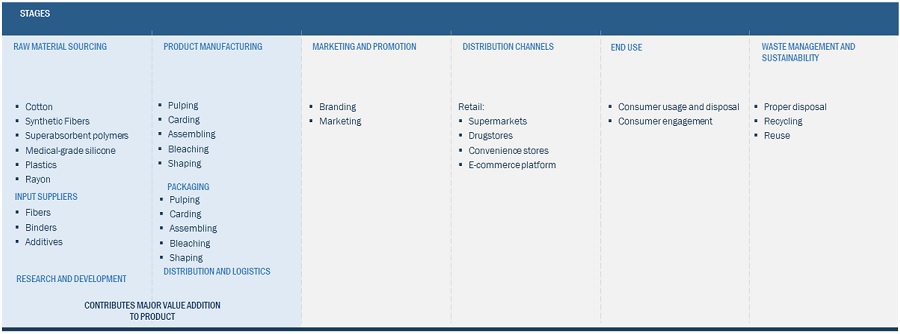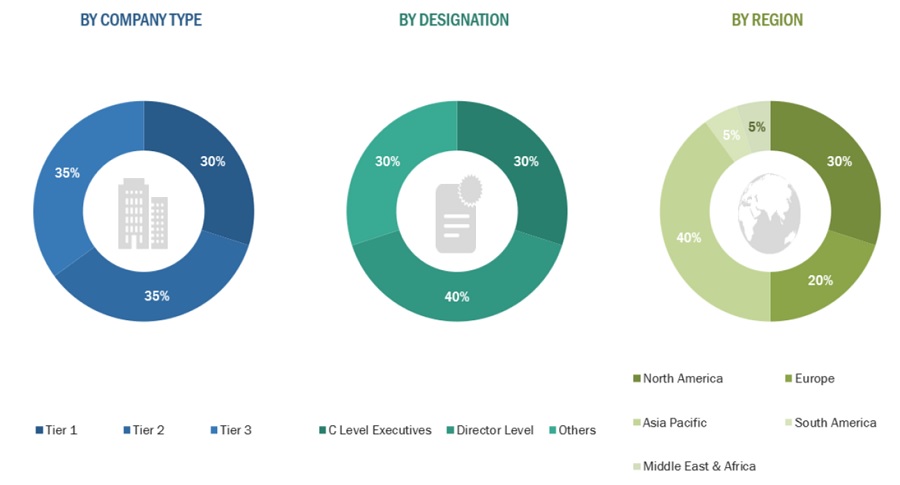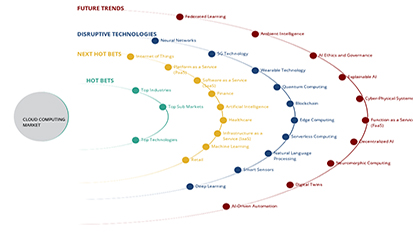Feminine Hygiene Products Market by Nature (Disposable, Reusable), Type (Sanitary Napkins, Panty Liners, Tampons, Menstrual Cups), Region (Asia Pacific, North America, Europe, Middle East and Africa, South America) - Global Forecast to 2028
Updated on : March 20, 2024
Feminine Hygiene Products Market
Feminine hygiene products market was valued at USD 24.6 billion in 2023 and is projected to reach USD 32.2 billion by 2028, growing at 5.5% cagr from 2023 to 2028. The feminine hygiene market has observed stable growth throughout the study period and is expected to continue with the same trend during the forecast period. Feminine hygiene products help manage menstrual flow, providing security and comfort during periods. They prevent leaks and allow women to go about their daily activities. Additionally, they contribute to improved hygiene by minimizing the risk of infections or discomfort, particularly during menstruation, thus promoting women’s physical and emotional well-being.
Attractive Opportunities in the Feminine Hygiene Products Market

To know about the assumptions considered for the study, Request for Free Sample Report

Feminine Hygiene Products Market Dynamics
Driver: Increasing female population & urbanization
The growth of the female population, coupled with rapid urbanization, significantly impacts the feminine hygiene products market. As more women move to urban areas and attain higher education levels, their awareness and purchasing power increase, leading to greater demand for feminine hygiene products. According to data published by the UN (World Population Prospects), the population of females in the world is estimated at around 3.9 billion, representing 49.58% of the world population. The Majority of countries and regions worldwide have more females than males.
Restraint: Social stigma associated with menstruation and feminine hygiene products
In the ever-evolving feminine hygiene products market landscape, one persistent challenge stands out - the social stigma associated with menstruation and feminine hygiene products. This profoundly entrenched stigma has far-reaching consequences, restraining the market’s growth and hampering the well-being of women worldwide.
Social stigma may deter open discussions about menstruation and intimate hygiene, making it challenging for individuals to seek and access appropriate products and information. It can create a culture of shame and silence, preventing the normalization of these essential aspects of women.
Opportunity: Develop eco-friendly feminine hygiene products
There is a global shift towards sustainability and environmental responsibility. Consumers are increasingly concerned about the ecological impact of disposable menstrual products, which generate a substantial amount of waste. Eco-friendly alternatives, such as reusable menstrual cups, cloth pads, and biodegradable tampons, address these concerns by reducing waste and carbon footprint, making them attractive options.
Challenge: Heightened awareness of environmental impact has led to concerns about disposable feminine hygiene products contributing to waste and pollution
One of the significant challenges associated with feminine hygiene products is pollution, particularly in the context of disposable products. Menstrual pads and tampons, often made with synthetic materials, contribute to pollution in several ways. When disposed of improperly, these products can end up in landfills and oceans, leading to long-lasting environmental consequences. The plastics and chemicals used in these products can take hundreds of years to decompose, and the presence of such non-biodegradable waste has adverse effects on ecosystems, marine life, and public health. As such, managing and reducing the environmental impact of feminine hygiene products poses a critical challenge that necessitates innovative, eco-friendly solutions to mitigate pollution and promote sustainability within the industry. Such factors can limit its market growth.
Feminine Hygiene Products Market Ecosystem

Based on the type, the sanitary napkins segment is projected to grow significantly during the forecast period.
Based on type, the sanitary pads/napkins segment accounts for the highest share. Efforts to raise awareness about menstrual health and hygiene have increased. Education campaigns and initiatives have successfully reduced the stigma around menstruation and promoted the use of sanitary pads. As more women and girls access information about menstrual hygiene, the demand for hygienic pads has increased. Such factors are expected to enhance the market for the segment during the forecast period.
Based on nature, the disposable segment accounts for the largest share of the overall market.
Based on material, the ceramics segment accounts for the highest share. Growing awareness about menstrual hygiene and hygiene standards, urbanization, and women’s participation in the workforce have boosted the demand for convenient and disposable menstrual products. Manufacturers’ ongoing innovations, including improved product designs, materials, and features, have further contributed to the market’s growth, offering consumers more comfortable and efficient options. As disposable feminine hygiene products become more accessible and cater to diverse needs, the market is expected to maintain its growth trajectory, fulfilling an essential role in women’s well-being and convenience.
Asia Pacific is expected to account for the largest share of the global market during the forecast period.
Based on the region, Asia Pacific accounts for the largest share. The Asia-Pacific feminine hygiene market is characterized by its diversity, with variations in consumer preferences, cultural attitudes, and income levels. Manufacturers have responded by tailoring products to suit these diverse needs, leading to a wide range of options on the market. As the region’s economies continue to grow and access to these products expands, the feminine hygiene market in the Asia-Pacific is expected to maintain its upward trajectory, offering both convenience and improved menstrual health for women across the region.

To know about the assumptions considered for the study, download the pdf brochure
Key Market Players
Johnson & Johnson (US), Procter & Gamble (US), Kimberly-Clark (US), Essity Aktiebolag (publ) (Sweden), Kao Corporation (Japan), Daio Paper Corporation (Japan), Unicharm Corporation (Japan), Premier FMCG (South Africa), Ontex (Belgium), Hengan International Group Company Ltd. (China), Drylock Technologies (Belgium), Natracare LLC (US), First Quality Enterprises, Inc. (US), Bingbing Paper Co., Ltd. (China), and others are among the key players leading the market through their innovative offerings, enhanced production capacities, and efficient distribution channels.
Get online access to the report on the World's First Market Intelligence Cloud
- Easy to Download Historical Data & Forecast Numbers
- Company Analysis Dashboard for high growth potential opportunities
- Research Analyst Access for customization & queries
- Competitor Analysis with Interactive dashboard
- Latest News, Updates & Trend analysis
Request Sample Scope of the Report
:
Get online access to the report on the World's First Market Intelligence Cloud
- Easy to Download Historical Data & Forecast Numbers
- Company Analysis Dashboard for high growth potential opportunities
- Research Analyst Access for customization & queries
- Competitor Analysis with Interactive dashboard
- Latest News, Updates & Trend analysis
|
Report Metric |
Details |
|
Market Size Available for Years |
2021 to 2028 |
|
Base Year Considered |
2022 |
|
Forecast Period |
2023–2028 |
|
Forecast Units |
Value (USD Million/Billion), Volume(Number of Units/Product) |
|
Segments Covered |
Type, Nature, and Region |
|
Geographies Covered |
North America, Europe, Asia Pacific, South America, and Middle East & Africa |
|
Companies Covered |
The major market players include Johnson & Johnson (US), Procter & Gamble (US), Kimberly-Clark (US), Essity Aktiebolag (publ) (Sweden), Kao Corporation (Japan), Daio Paper Corporation (Japan), Unicharm Corporation (Japan), Premier FMCG (South Africa), Ontex (Belgium), Hengan International Group Company Ltd. (China), Drylock Technologies (Belgium), Natracare LLC (US), First Quality Enterprises, Inc. (US), Bingbing Paper Co., Ltd. (China), and among others. |
This research report categorizes the feminine hygiene market based on type, nature, and region.
Based on the type, the feminine hygiene products market has been segmented as follows:
- Sanitary Napkins
- Tampons
- Panty Liners
- Menstrual Cups
Based on its nature, the feminine hygiene products market has been segmented as follows:
- Reusable
- Disposable
Based on the region, the feminine hygiene products market has been segmented as follows:
-
North America
- US
- Canada
- Mexico
-
Europe
- Germany
- UK
- France
- Italy
- Norway
- Poland
-
Asia Pacific
- China
- Japan
- India
- Malaysia
- Thailand
-
South America
- Argentina
- Brazil
- Chile
-
Middle East & Africa
- Saudi Arabia
- South Africa
- UAE
Recent Developments
- In February 2019, P&G acquired This is L., a period care startup that manufactures organic pads and tampons.
- In February 2022, Kimberly-Clark Corporation successfully finalized its acquisition of a controlling interest in Thinx, Inc., a pioneering company in the reusable period and incontinence underwear sector.
- In September 2020, Johnson & Johnson Consumer Health planned to invest USD 800 million by 2030 to enhance its products’ sustainability, aiming to contribute to a healthier planet. For example, the O.B. brand carton is FSC-certified and contains 90% recycled material. Its Wuppertal, Germany manufacturing plant has been using renewable sources of electricity.
Frequently Asked Questions (FAQ):
What is the key driver and opportunity for the feminine hygiene market?
Increasing female population & urbanization and developing eco-friendly feminine hygiene products is the primary driver and opportunity, respectively.
Which region is expected to hold the highest market share in the feminine hygiene market?
The feminine hygiene market in Asia Pacific is expected to dominate the market share in 2028, showcasing strong demand for sanitary napkins.
What nature of feminine hygiene products account for a significant share?
Disposable segment is the primary nature of feminine hygiene products used.
Who are the major service providers of feminine hygiene products?
The key manufacturers operating in the market are Johnson & Johnson (US), Procter & Gamble (US), Kimberly-Clark (US), Essity Aktiebolag (publ) (Sweden), and Kao Corporation (Japan).
What total CAGR is expected for the feminine hygiene market from 2023 to 2028?
The market is expected to record a CAGR of 5.5% from 2023-2028.
To speak to our analyst for a discussion on the above findings, click Speak to Analyst
The study involved four major activities in estimating the current feminine hygiene market size—exhaustive secondary research collected information on the market, peer, and parent markets. The next step was to validate these findings, assumptions, and measures with industry experts across the value chain of feminine hygiene through primary research. Both top-down and bottom-up approaches were employed to estimate the total market size. After that, market breakdown and data triangulation were used to estimate the size of the segments and sub-segments of the market.
Secondary Research
The research methodology used to estimate and forecast the access control market begins with capturing data on the revenues of key vendors in the market through secondary research. In the secondary research process, various secondary sources, such as Hoovers, Bloomberg BusinessWeek, Factiva, World Bank, and Industry Journals, were referred to for identifying and collecting information for this study. These secondary sources included annual reports, press releases & investor presentations of companies, white papers, certified publications, articles by recognized authors, notifications by regulatory bodies, trade directories, and databases. Vendor offerings have also been taken into consideration to determine market segmentation.
Primary Research
The feminine hygiene market comprises several stakeholders in the supply chain, such as manufacturers, equipment manufacturers, traders, associations, and regulatory organizations. The development of various end-use industries characterizes the demand side of this market. Various primary sources from the supply and demand sides of the market were interviewed to obtain qualitative and quantitative information. Following is the breakdown of the primary respondents:

To know about the assumptions considered for the study, download the pdf brochure
Market Size Estimation
The top-down and bottom-up approaches were used to estimate and validate the total size of the feminine hygiene market. These methods were also used extensively to determine the market size of various segments. The research methodology used to estimate the market size included the following:
- The key players were identified through extensive primary and secondary research.
- The value chain and market size of the feminine hygiene market, in terms of value and volume, were determined through primary and secondary research.
- All percentage shares, splits, and breakdowns were determined using secondary sources and verified through primary sources.
- All possible parameters that affect the market covered in this research study were accounted for, viewed in extensive detail, verified through primary research, and analyzed to obtain the final quantitative and qualitative data.
- The research included the study of reports, reviews, and newsletters of top market players, along with extensive interviews for opinions from key leaders, such as CEOs, directors, and marketing executives.
Global Feminine Hygiene Market Size: Bottom-Up Approach

To know about the assumptions considered for the study, Request for Free Sample Report
Global Feminine Hygiene Market Size: Top-Down Approach

Data Triangulation
The market was split into several segments and sub-segments after arriving at the overall market size using the market size estimation processes as explained above. Data triangulation and market breakdown procedures were employed to complete the overall market engineering process and determine each market segment’s and subsegment’s exact statistics. The market size was calculated globally by summing up the country-level and regional-level data.
Market Definition
The global feminine hygiene market refers to the industry that produces and sells a wide range of products designed specifically for the personal care and hygiene needs of individuals who identify as women. These products are primarily used during menstruation, vaginal care, and general intimate hygiene. Common items in this market include sanitary pads, tampons, menstrual cups, panty liners, feminine wipes, and intimate wash products. The market is driven by changing societal norms, increased awareness of women’s health and hygiene, and product design and materials innovations.
Key Stakeholder
- Feminine hygiene product manufacturers
- Distributors and Suppliers of feminine hygiene goods.
- Distributors and suppliers of raw materials suppliers.
- Associations and Industrial Bodies such as FDA (US Food and Drug Administration), FTC (Federal Trade Commission), CDC (Centers for Disease Control and Prevention), COFEPRIS (Federal Commission for the Protection against Sanitary Risks), CONEVAL (National Council for the Evaluation of Social Development Policy), CHP Canada (Consumer Health Products Canada), Guelph-Wellington Women in Crisis, and Others
- NGOs, Governments, Investment Banks, Venture Capitalists, and Private Equity Firms
Report Objectives:
- To define, describe, and forecast the size of the global feminine hygiene market in terms of value and volume
- To provide detailed information regarding the key factors, such as drivers, restraints, opportunities, and industry-specific challenges, influencing the growth of the feminine hygiene market
- To analyze and forecast the size of various segments (type & nature) of the feminine hygiene market based on five major regions—North America, Europe, Asia Pacific, South America, Middle East & Africa—along with key countries in each of these regions
- To analyze recent developments and competitive strategies, such as expansions, new product developments, partnerships, and acquisitions, product launches to draw the competitive landscape of the market
- To strategically profile the key players in the market and comprehensively analyze their core competencies
Available Customizations:
With the given market data, MarketsandMarkets offers customizations according to client-specific needs.
The following customization options are available for the report:
- Additional country-level analysis of the feminine hygiene market
- Profiling of additional market players (up to 5)
Product Analysis
- Product matrix, which gives a detailed comparison of the product portfolio of each company.












Growth opportunities and latent adjacency in Feminine Hygiene Products Market